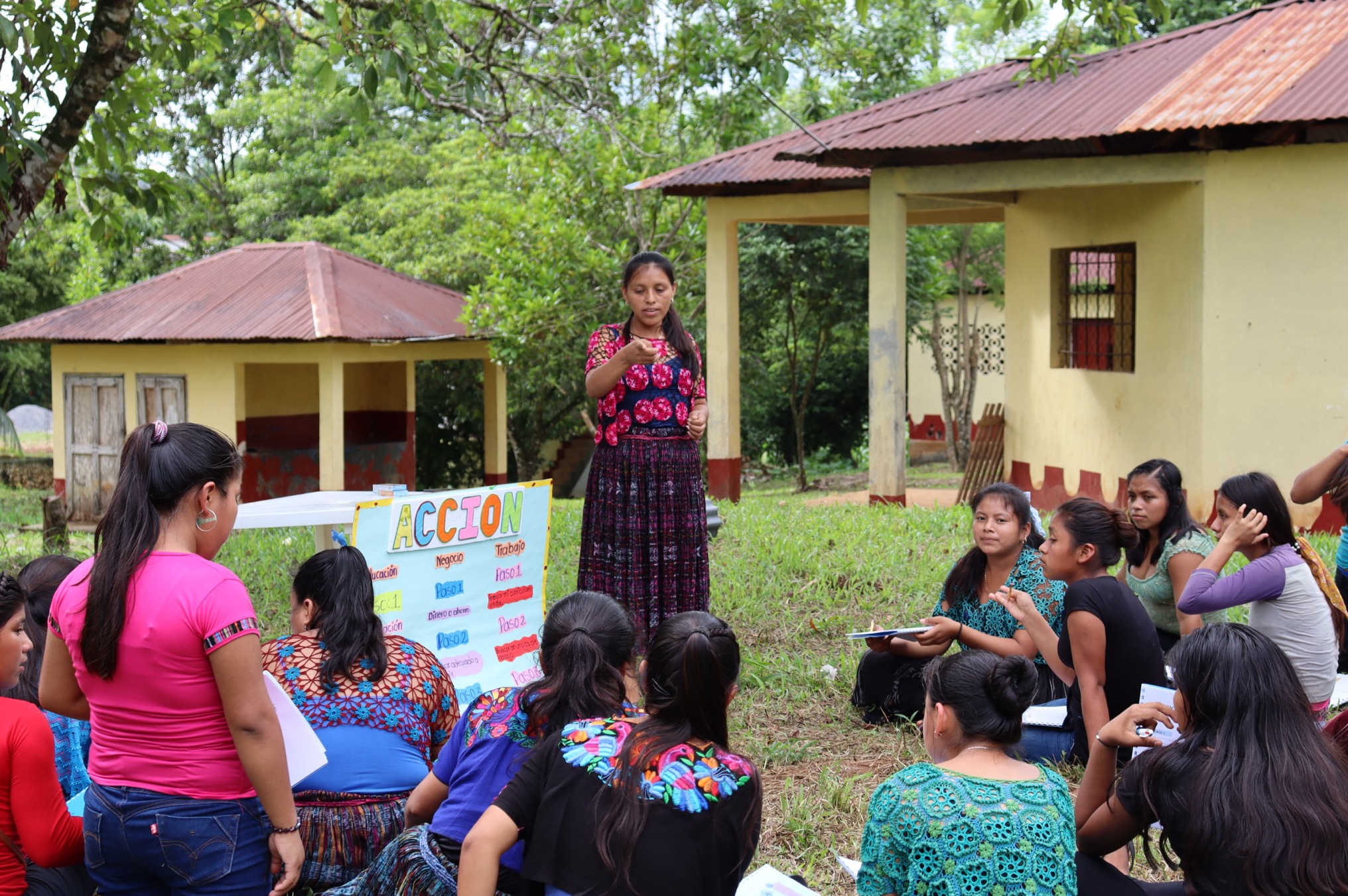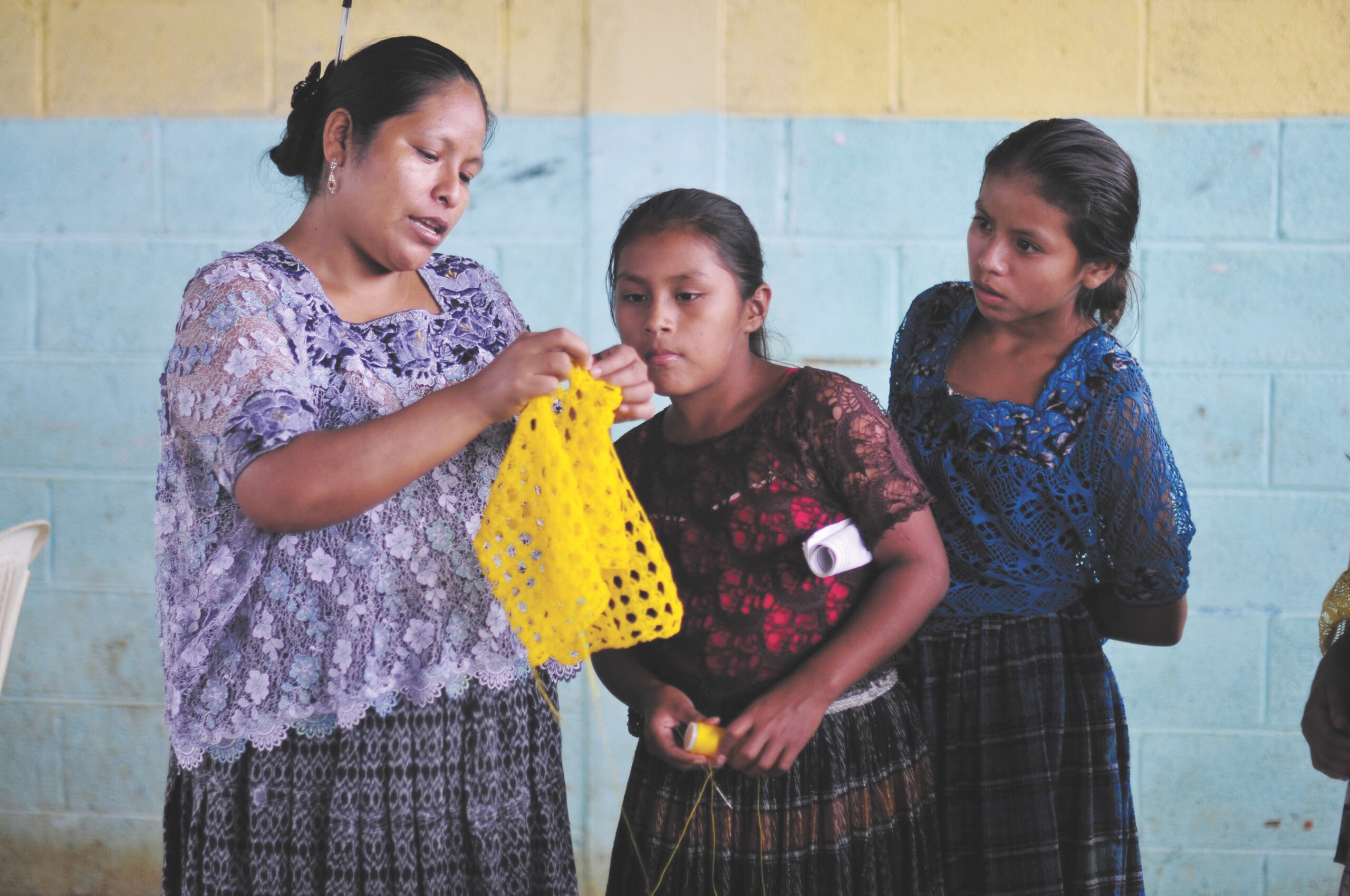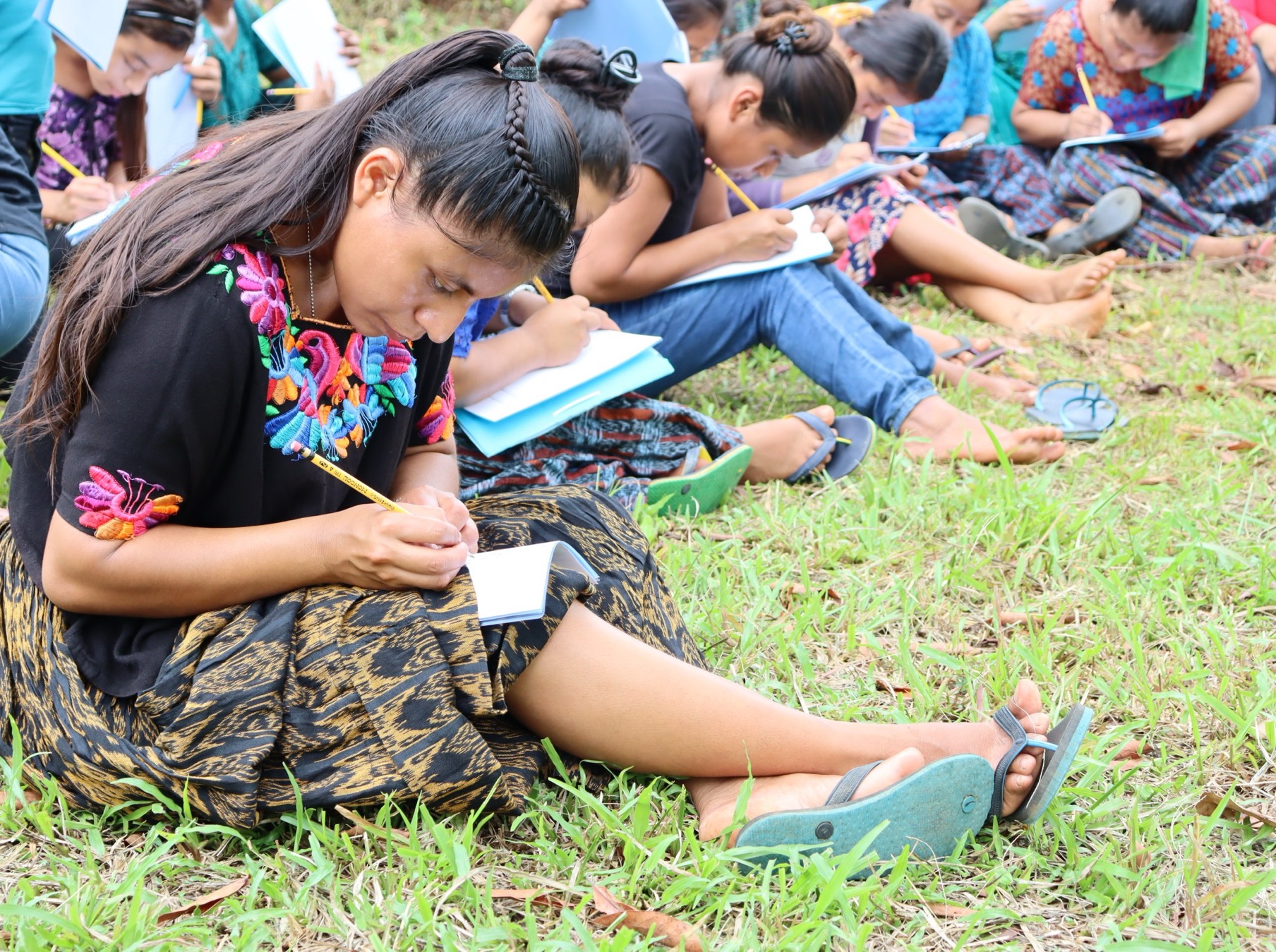
Mentors who run girls’ clubs can and do make a big difference in their communities. One of these mentors, Elizabeth, is a Maya K’iche’ woman who works with the Abriendo Oportunidades program in rural Guatemala. Elizabeth started as a mentor working with groups of Indigenous girls and adolescents. She went on to establish a network of Indigenous mentors and is now a community mentor leader. But with limited funding, mentoring is often just a short-term job. Some mentors, who are responsible for leading community groups to build girls’ life skills and empowerment, are over-burdened and under-supported. Mentorship is one element of programming using community-based clubs for adolescent girls and young women (AGYW), often called “safe spaces.”
A growing number of programs include safe spaces in order to engage these girls and women, who are otherwise hard to reach, and move the needle on key outcomes for them. However, with the slow pace of evidence-gathering and frequent implementation challenges, demonstrating impact can be a tall order. It is concerning that lessons and guidance from safe space implementations are rarely systematically documented and shared. As a field, we also fail to communicate and disseminate insights with mentors and local program partners. This undermines implementers’ efforts to strike the delicate balance between quality and coverage.
Safe spaces have become a common model for building life skills and empowering AGYW in low- and middle-income countries who are not in school nor involved in other formal services and structures. In countries with low rates of secondary schooling and a ‘youth bulge,’ [proportionately larger youth population], as a result of persistently high birth rates, it’s imperative to use alternative ways to reach them in their communities. Multi-country initiatives that include safe spaces have proliferated in recent years.
Abriendo Oportunidades (AO), a program first developed in 2004 by the Population Council in Guatemala, builds indigenous AGYW’s assets in Mesoamerica. A consistent lesson from large initiatives like AO, which aim to reach many girls and young women, is that planners should prioritize details like how many group mentors can feasibly lead, optimal group size, and how frequently mentor supervisors should visit for support and monitoring. Time and again, impact evaluations, program reports, and mentors’ reflections about program challenges highlight the need for deliberate planning and monitoring, evaluation, and learning (MEL).
Learning from Abriendo Opportunidades
AO is a large, long-running program. In crafting a scalable program, planners drew on solid evidence from multiple evaluations and developed a set of priorities that makes scaling possible. Three takeaways for successful programming:
- Ensure community ownership. AGYW need permission from parents and caregivers to participate in regular group meetings, which may challenge household and community norms regarding young female’s mobility and tap into safety concerns, availability for tasks, and exposure to new ideas. Given the potential sensitivity of safe spaces programming, it is important to include activities at the beginning of the project that gain community buy-in and are led by local influential leaders. This step might help with regular participation and an enabling environment so AGYW can exercise new skills.
- How AO does this: Planners built community and district-level ownership of AO by negotiating tangible agreements with local stakeholders, including securing access to the community infrastructure and processes (e.g., allowing meetings in schools).
- Intentionally plan for scale and sustainability. The need for scalable, sustainable approaches to reach girls who are not in school and disconnected from financial, health, and other services is large and growing in countries with young population structures. It makes sense to embed safe space delivery platforms within government systems from the beginning of program design. Actively engaging government stakeholders at local, subnational, or national levels can build their sense of ownership early and pay dividends later—for instance laying the groundwork for mentoring to be covered by government budgets when project funding ends.
- How AO does this: To increase the chance of sustainability, partnerships with key government agencies connected the program to national services, such as second-chance schooling and counseling on gender-based violence.
- Invest in mentors. In safe spaces, mentors bridge program planners and group members. These young women can provide meaningful and sustainable connections to communities when locally recruited. For some mentors, the tasks come naturally, given a background as teachers or facilitators, but for others, the program is their first opportunity to develop leadership skills. The latter need initial and refresher training to learn participatory approaches that actively engage AGYW in empowerment programming, as well as ongoing supportive supervision and regular peer connections and support. Mentors also can play an important role in monitoring, evaluation, and learning (MEL). Plus, paying them and offering skills-building opportunities are essential to retain mentors and avoid over-burdening them.
- How AO does this: AO gives mentors tools for the program and offers opportunities for personal and professional development like monthly compensation for two years benchmarked to the local minimum wage, as well as connections to employment opportunities in education, social work, and related areas.
As safe space programs expand, inconsistent approaches can undermine quality and effectiveness. Documenting and sharing implementation lessons with funders, policymakers, and implementing partners is essential to improving outcomes for AGYW. Lessons on integrating safe spaces into public systems are a priority, as countries learn by doing. Strategies like ensuring community ownership, planning for scale and sustainability, and investing in mentors can help balance quality and coverage in large-scale programs. These are vital steps to reduce the risk of wasting limited resources dedicated to mentors like Elizabeth in Guatemala and the women and girls she serves.
Photos: Educators and the girls they support through the Abriendo Oportunidades program in Guatemala.


